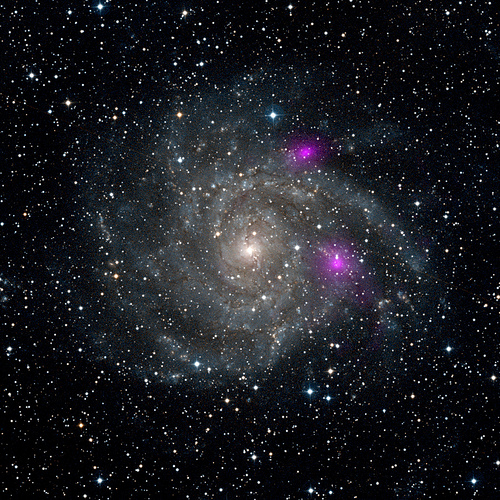By Ashley O’Neill (Contributor) – Email
Print Edition: April 10, 2013
In a galaxy 47 million light-years away, a black hole has woken from between 20 and 30 years of inactivity to engulf a passing planet.
Astronomers observed this event in Galaxy NGC 4845 through European Space Agency’s (ESA) integral space observatory, with follow-up observations from ESA’s XMM-Newton, NASA’s Swift and Japan’s MAXI X-ray monitor on the International Space Station.
“The observation was completely unexpected, from a galaxy that has been quiet for at least 20-30 years,” said Marek Nikolajuk of the University of Bialystok, Poland, lead author of the paper in Astronomy & Astrophysics and quoted on the ESA’s website.
Astronomers were observing a different galaxy when they noticed activity elsewhere in their field of view. They saw a bright X-ray flare coming from what they later confirmed as the NGC 4845 galaxy, a galaxy not generally known for such high-energy emissions. The emissions were traced back from its highest peak in January 2011, when the galaxy brightened before slowly subsiding over the last two years.
After analysing the characteristics of the flare, astronomers determine the high-energy emissions came from material around the galaxy’s centre black hole tearing apart and consuming a passing planet.
Astronomers speculate the planet was 14 to 30 times the mass of Jupiter. This size corresponds to brown dwarfs – planetary bodies that are not big enough to fuse hydrogen in their core and ignite into stars. Some astronomers think the planet could have had a lower mass—just a few times the size of Jupiter—placing it in the gas-giant category.
The black hole at the centre of NGC 4845 is estimated to have a mass 300,000 times that of the sun. The way the energy emission decayed since January 2011 suggests that the planet suffered a slow demise.
Ronald Walter of the Observatory of Geneva, Switzerland, told ESA that “this is the first time where we have seen the disruption of a sub-stellar object by a black hole.”
Walter’s team estimates that only the outer layers of the object were “eaten” by the black hole, which would be around 10 per cent of the object’s total mass. This would leave a denser core to orbit the black hole and eventually be consumed, too.
“Estimates are that events like these may be detectable every few years in galaxies around us, and if we spot them, Integral, along with other high-energy space observations, we will be able to watch them play out just as it did with NGC 4845,” said Christoph Winkler, ESA’s Integral project scientist, as quoted on the ESA website.
Free-floating planetary-mass objects are not uncommon in galaxies and are usually ejected from their parent solar systems by strong gravitational interactions.
This event gives astronomers more information about what happens to different types of objects as they encounter black holes of varying sizes.
A similar event is predicted to happen to our own galaxy in the near future, perhaps even this year. While there is not a brown dwarf or gas-giant on the menu this time, a gas planet a few times bigger than Earth was observed spiralling towards the black hole. This planet too will face its inevitable fate soon, and astronomers are staying tuned to see how this planet reacts when being sucked into a black hole.


